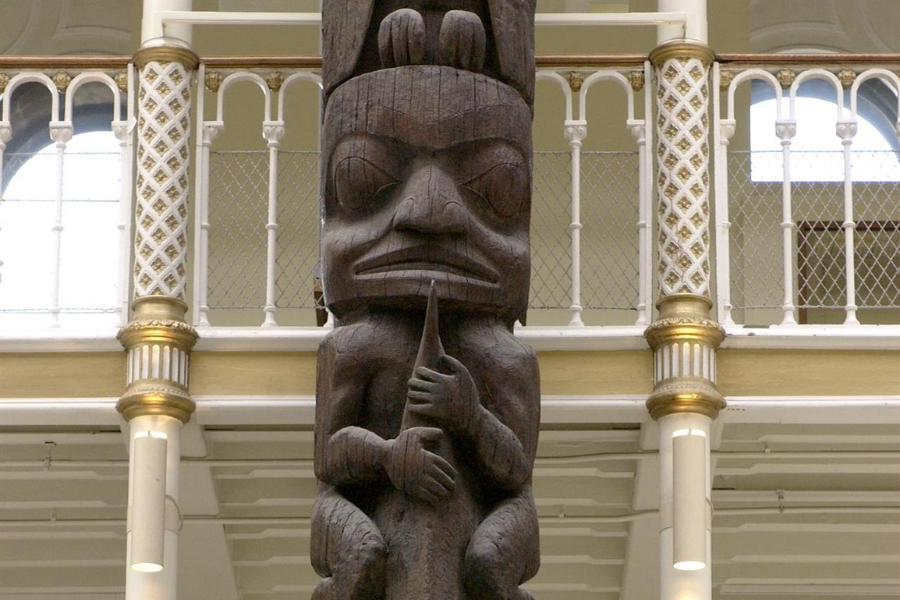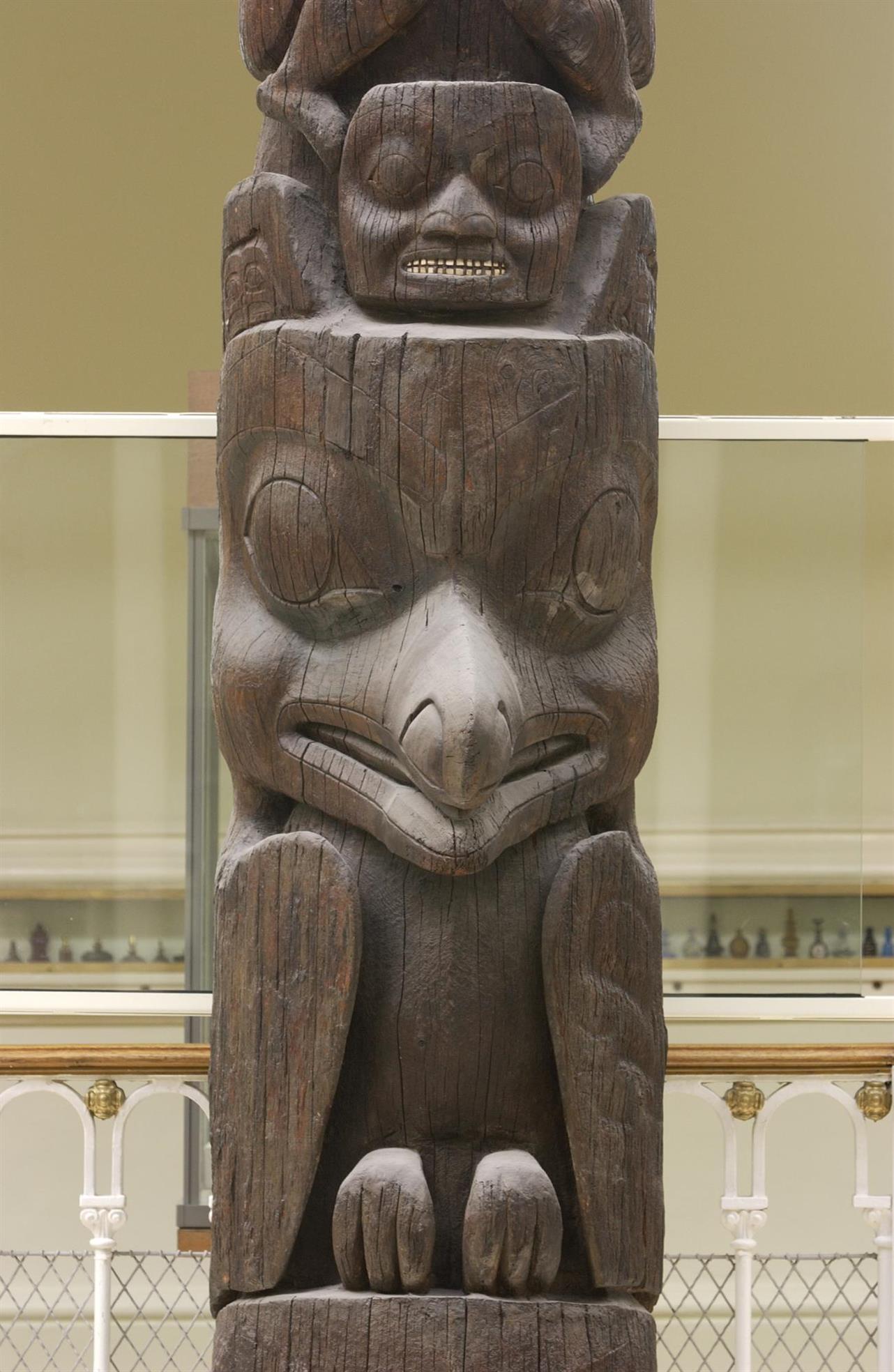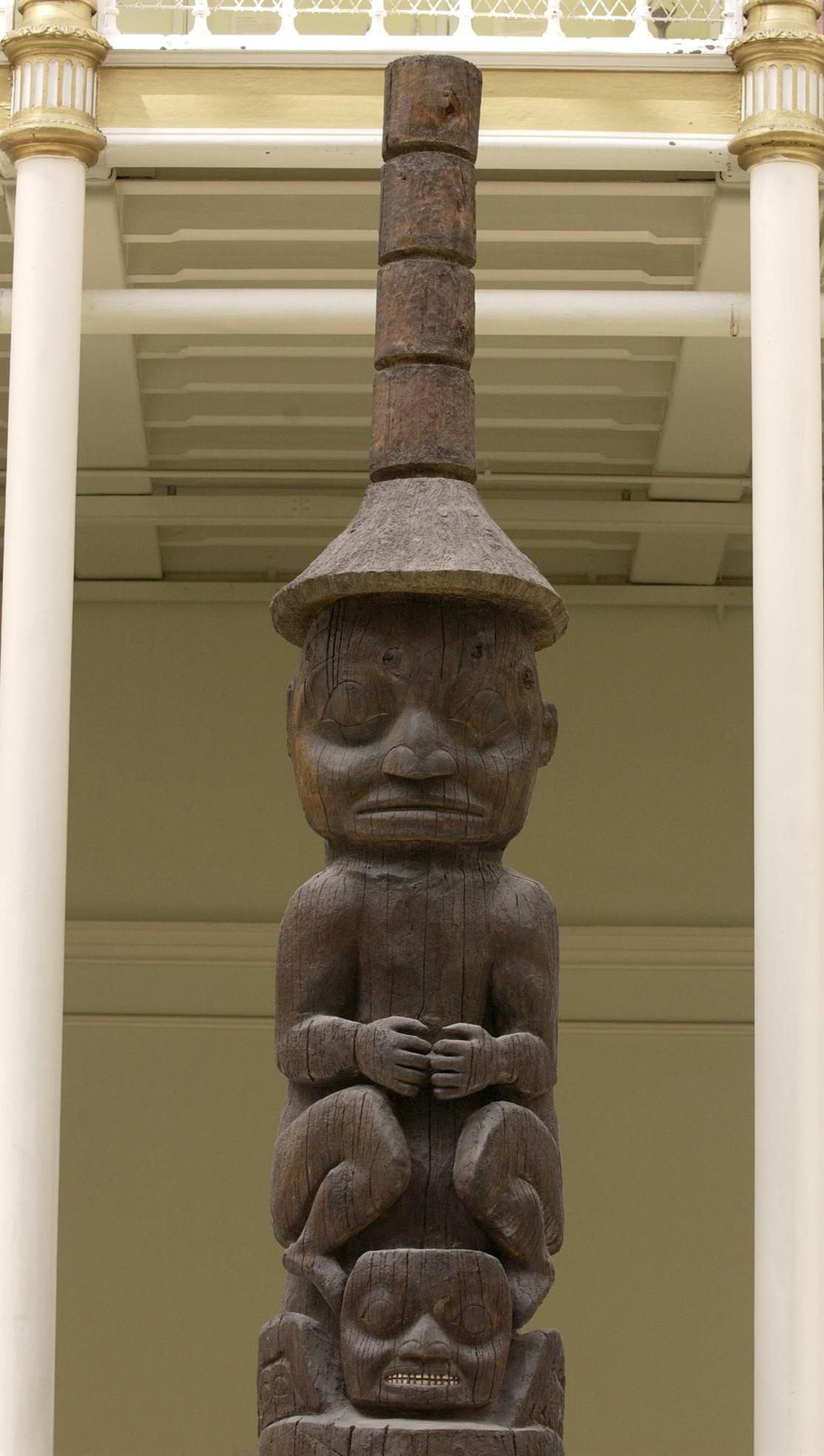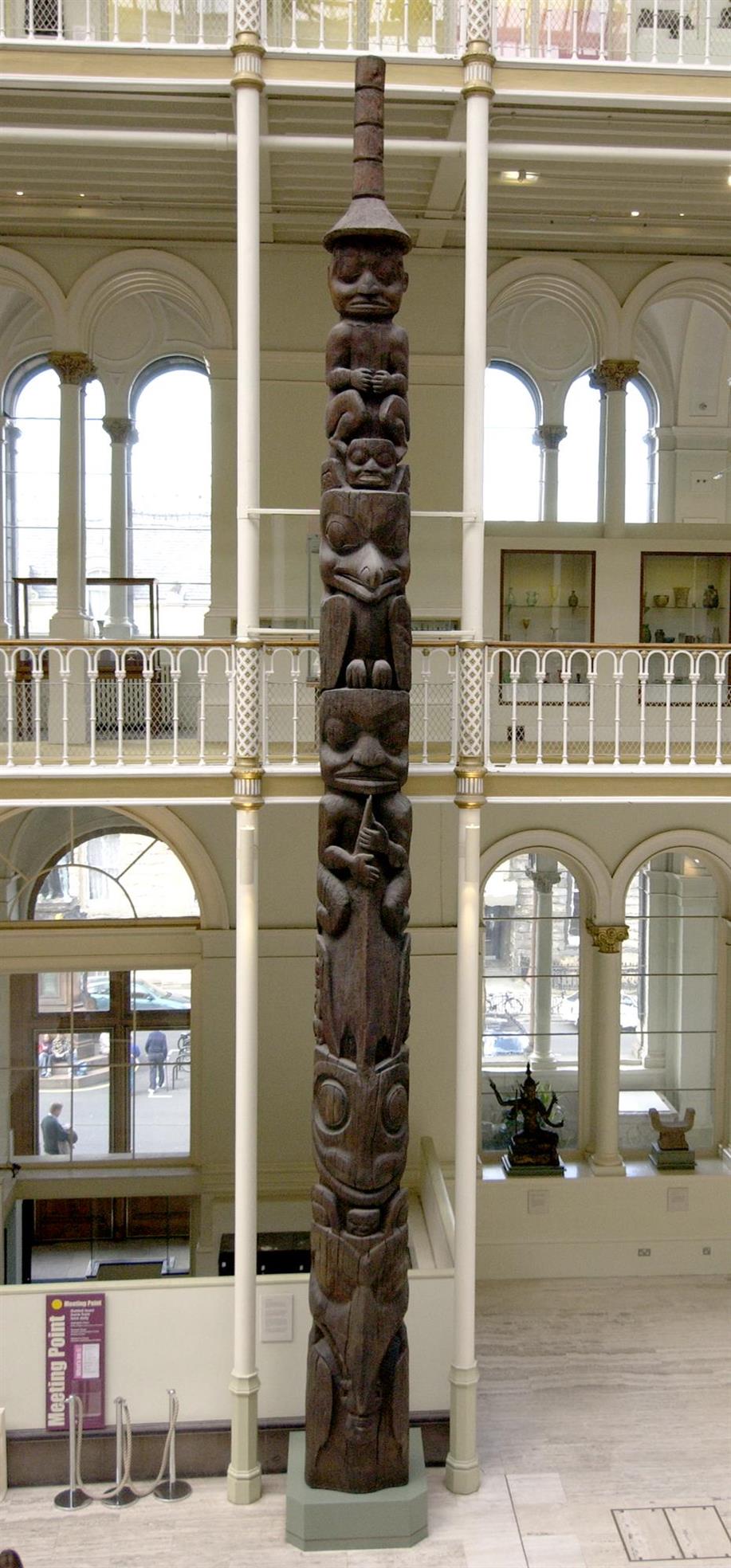
THE National Museum of Scotland (NMS) is set to meet with First Nation leaders to discuss the repatriation of a totem pole that was stolen 93 years ago from what is modern-day British Columbia.
NMS will host a delegation from the Nisga’a Nation, which was deprived of the wooden Ni’isjoohl memorial carving when it was taken by Canadian anthropologist Marius Barbeau in 1929.
The pole was carved in the 1860s and tells the tale of Ts’wawit – a Nisga’a warrior who was set to become chief before he was killed during a conflict with a neighbouring nation.
Nearly 70 years later it was sold to NMS and could now become only the second First Nation artefact to be returned from Europe.
Leaders of the House of Nis’sjoohl – one of 50 houses within the Nisga’a Nation – said the museum had the chance “to take the first step towards reconciliation” if they return the pole.

Chief Earl Stephens said: “This will be the first time in living memory that members of the House of Nis’sjoohl will be able to see the memorial pole with our own eyes.
“This visit will be deeply emotional for us all.”
Stephens, who is also called Sim’oogit Ni’isjoohl, will be joined by Dr Amy Parent - Noxs Ts’aawit – and Shawna McKay as part of the delegation for the talks on August 22.
It has been alleged that Barbeau stole the pole from a Nisga’a village while the people were away for the hunting, fishing and harvesting season.
Dr Parent, Canada research chair in indigenous education and governance at Simon Fraser University, said the totem pole symbolised “a chapter of the Peoples’ cultural sovereignty and a living constitutional and visual record”.
She added: “The pole is a priceless belonging that our respected hereditary leaders have aptly called a cultural treasure.
“It tells the relationship of our house to the land and to our people. To have had it taken from us is to have removed a piece of our cultural identity and an integral part of the story of our nationhood.”
The United Nations Declaration on the Right of Indigenous Peoples gives indigenous people the right to “seek access and/or repatriation of ceremonial objects and human remains in their possession through fair, transparent and effective mechanisms”.

Despite hopes that the pole will be given back to the Nisga’a people, the summit does not guarantee the artefact’s return.
There is only one previous example of a First Nation totem pole being returned by a European institution, with the Swedish Museum of Ethnography giving the Haisla G’psgolox pole back in 2006.
And NMS’s current policy presumes against the deaccession and removal of items from its exhibits, including the transfer of objects without the support of a national government.
Back in 2019, after a seven-year dispute, the remains of Beothuk elders Demasduwit and Nonosbawsut were only returned to the Mi’kmaq people in Newfoundland and Labrador after the Canadian government agreed that they would be shown in the Canadian Museum of History, rather than a regional exhibition.
Following their return, the current Beothuk chief, Misel Joe, was allowed to carry out a “purification ceremony” on the remains.
He later said to CBC: “Maybe what I need to do is go and dig up Robert Burns, maybe that will open somebody’s eyes.
"I mean, what’s the difference in me going to dig up Burns and bringing him back to study in Newfoundland than them taking the remains of our people to study for all these years?”

A spokeswoman for NMS said: “We welcome open dialogue and foster collaboration with communities for whom objects in the collection have special relevance.
“We look forward to hosting a delegation from the Nisga’a Nation at the National Museum of Scotland to view the memorial pole, share information on it and share our procedure for considering requests for the transfer of objects.”







